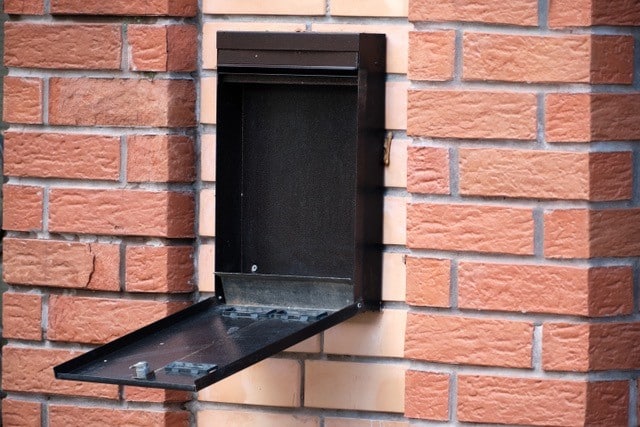When we think of fraud, our minds usually go to cybersecurity and protecting ourselves online. While cybersecurity is an important topic, fraudsters are still intercepting the “traditional” ways of communicating. Mail fraud is a larger problem than most realize. So, what can we do protect our mail activity and prevent mail theft?
What Is Mail Fraud?
Mail fraud is any scheme that aims to trick you out of money or personal information by way of U.S. postal mail. Mail scams are meant to cause confusion and instill a sense of urgency within the reader. Postal fraud usually urges readers to act, whether that’s by visiting a website or calling someone.
There is also mail theft, which is when thieves take mail with a criminal intent from a home mailbox, postal drop box or directly from the mail carrier. Criminal intent may be check forgery, check fraud or identity theft.
Fraudsters know that there is sensitive information in mail, such as bills, account statements, tax returns and credit/debit cards, which is why they are eager to get their hands on it. Fraudsters may also target outgoing mail to steal any checks or documents with personal information you are sending to others. By putting up the red flag on your mailbox, it indicates you have outgoing mail and thieves see that as an open door to steal your personal information, cash or checks that you fmay have placed in the mail.
The United States Postal Service (USPS) has experienced an increase in letter carrier robberies, with 412 USPS letter carriers being robbed in 2022 and 305 incidents in the first half of 2023. Further, postal inspectors have arrested almost 9,000 suspects for theft of mail and packages from 2018 to 2023.
How to Protect Yourself From Mail Fraud
Like any other fraud or scam, there are proactive steps you can take for mail theft and fraud protection.
Know the Red Flags of Mail Fraud
Receive a suspicious letter in the mail? Let’s check it for common red flags.
- It seems too good to be true. If you received a mailing that states you’ve won a grand prize and need to contact someone as soon as possible to verify your personal information, it is most likely too good to be true, especially if you did not enter a sweepstakes or complete a survey.
- The business isn’t legitimate. If you received a letter from a company you’ve never heard of, it’s best to verify that the company exists by validating them on the Better Business Bureau
- Phrases stand out. A fraudulent letter is supposed to create urgency. Look for phrases like “once-in-a-lifetime opportunity” or “one in a million” or “contact us TODAY to claim your prize.” If the letter contains phrases like these, it is likely mail order fraud.
- Faded or illegible logos. On a fraudulent mailing, logos are usually faded or hard to read.
- Spelling errors. There are often misspelled words or typos in fraudulent content.
Promptly Pick Up Your Mail
Sitting mail is a fantastic target for fraudsters. Don’t give them the opportunity to steal your information by promptly picking up your mail. If you happen to be away on a trip, have a trusted friend or family member pick up your packages while you’re away.
Arrange Packages for Pickup
Even when you’re not away, if you know you have a package out for delivery, plan for either yourself or a trusted individual to be there when the package is delivered. If no one can be home for the delivery, you can use the Hold for Pickup option with the shipper (USPS, FedEx, UPS) to have it delivered to your local shipping store and pick it up later. You can also request signature confirmation with most carriers for an extra layer of security to prevent mail theft.
Know the Risks of Sending Payments Through Mail
Sending a payment through the mail is never 100% safe, but there are preferred ways to mail payments. Checks are the most common payment sent by mail, but it’s important to do it safely. You can increase the security of mailing a check by tracking it, making it out to a specific name (business or person) and sending it inconspicuously.
It is strongly recommended that you reconsider sending cash in the mail. If you can, send a check instead or pay online through the merchant’s secure website.
If a fraudster gets ahold of cash, it is free reign for them to do with it as they please because it’s not trackable, whereas checks have to be cashed first. If you contact your financial institution quickly enough, they can stop payment on the check.
Inquire About Overdue Mail
If you have not received an expected check, credit card or other valuable in a reasonable timeframe, follow up with the business or merchant that handled the shipment. They may be able to give you an update on where the item is in the shipping process or if it has been delivered. Don’t wait too long to ask. The sooner you act, the better.
Similarly, if you receive a notice about an overdue bill or missing payment you are sure you paid, do not ignore it. That may be an indication that your outgoing mail was stolen. If you believe that a form of payment has been misplaced or stolen, contact your financial institution and monitor your accounts closely for any suspicious activity. These two actions can help identify and stop mail fraud before it goes too far.
Opt for Digital Notifications
Today’s technology allows us to safely send sensitive information electronically. Instead of getting your bank account statements in the mail, opt for e-statements to help minimize the risk of mail identity theft and fraud.
Invest in a Locked Mailbox
There are locked mailboxes that allow mail to be dropped in but must be opened with a key to retrieve the mail. This mailbox theft prevention method stops thieves from retrieving your mail.
How to Report Mail Fraud
If you have been or believe you are a victim of mail fraud, you can report it to the USPS by visiting their website or calling 1-800-275-8777 to report a mail scam.
You should also alert your financial institutions that you have had sensitive information stolen. Doing so allows your bank or credit union to document this potential identity theft and give you a course of action to protect yourself and your accounts.
While the world may be embracing digital channels, mail fraud is still a risk. It is important to be proactive and take the above actions to help prevent mail fraud and to protect yourself.
Centris FCU has several mobile and online banking solutions to help keep your personal details out of the mail and away from fraudsters. Sign up for our eStatements today, or for more information on how to prevent mail theft and where to report mail fraud, visit the United States Postal Service.




